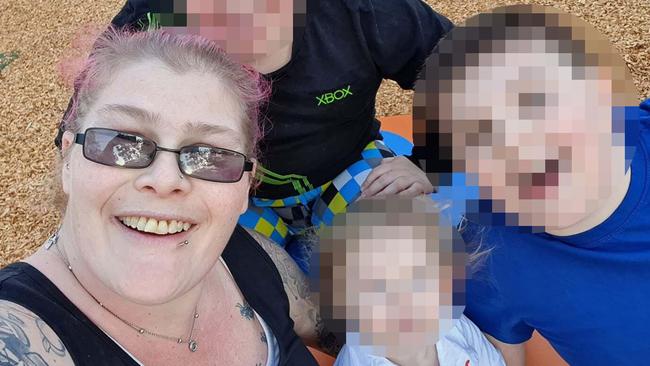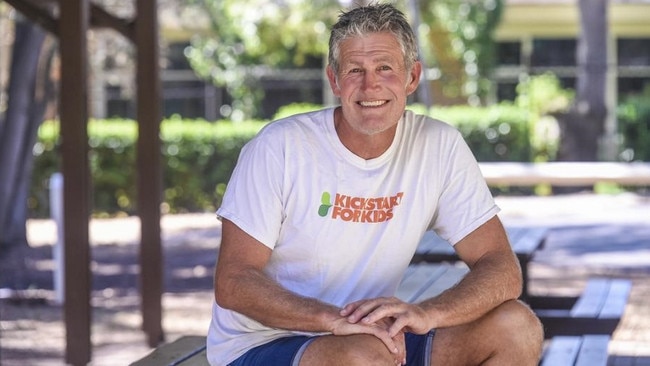Adelaide homeless crisis is costing some kids their education
A mum hit by the housing crisis says at one point she had to pull her kids out of school as the journey from their motel was too hard. Sadly, she is hardly alone.

SA News
Don't miss out on the headlines from SA News. Followed categories will be added to My News.
Children as young as eight are missing school because they are living in tents, cars and sheds or sleeping in bathrooms in overcrowded homes – as youth advocates say the cost-of-living crisis has created an “epidemic” of child homelessness and school disengagement.
Youth advocates say a growing number of students are missing school because their families don’t have permanent accommodation, or because they live in cramped or unsafe housing.
Ian Steele from Kickstart for Kids said the cost-of-living crisis meant “more kids than ever” were turning up to his organisation’s free breakfasts, some taking home food to feed their families living in cars.
“It’s the silent epidemic,” he said. “I’ve never seen so many kids that are living such a transient lifestyle.”

“I’ve heard of … a family in the western suburbs pitching tents in the school itself. Dad was a drug addict, substance abuse, nowhere to live.
“They couldn’t afford rent. I guess the place to go was school because the kids had to go to school to access the programs that are within the school and there’s toilets there.”
Mr Steele said children living in cars often had poor mental health. Many felt isolated because they were not able to charge their phonesand in some cases were shunned by other students.
One teenage girl told The Advertiser she was living in a backyard shed in an “unsafe suburb” because her home was overcrowded.
She said she was worried a relative could “just kick us out any second”.
Rebecca Lalor, 37, from Salisbury North, said after unsuccessfully applying for 250 rental properties several years ago she went on the public housing waitlist.
In the interim, she lived in a single motel room with her three kids aged 11, 9 and 2,for several months, supported by a non-government housing provider.
Ms Lalor, who now has a permanent home, said the noise from the other homeless families in the complex and the stress of four people living in a single room meant the kids were not getting up for school.
“I ended up homeschooling them as going from motels to school was too hard,” she said.
Another 10 Adelaide mums told The Advertiser about their desperate situations.
One was living in an unlined shed with three children under six, including a six-month-old baby.
In another case, a mum’s 13-year-old son was sleeping on a mattress on a bathroom floor because their home was not big enough for her large family – meaning he was often not well-rested enough to attend school.
One woman was living in a “fake-walled” dining room with two of her children – a 15-month-old and a 15-week-old infant – while her other two children were crammed into a small bedroom.
Maddy D’Angelo, who runs Kids First Australia’s flexible learning options program in Adelaide, said some students were missing school because they did not even have a mattress to sleep on.
Ms D’Angelo said in other cases, Kids First staff had visited lounge rooms filled with mattresses and seen small homes housing up to 12 people because of “intergenerational poverty and disadvantage”.
“What’s the first thing that suffers when accommodation is unsafe or unstable in a young person’s life? Their engagement in school,” she said.

An SA Housing Trust spokeswoman said there were 16,116 people waiting for public or community housing, including 4119 in the highest need category.
Figures for schools in outer suburban parts of Adelaide show attendance rates as low as 65 per cent of any given day – part of a worsening trend in less well-off areas over the past decade.
And more than 80 per cent of students in some schools are missing at least a month of classes over the course of a year.
SA Education Department chief executive Martin Westwell said: “Attendance rates fell in all areas across Australia during the global COVID-19 pandemic, but overall we are now seeing some improvements in South Australian public education.
“South Australia has a high concentration of disadvantage and there is a significant amount of work the Education Department is doing to support families who are experiencing hardship or difficult circumstances.”
More Coverage
Originally published as Adelaide homeless crisis is costing some kids their education




